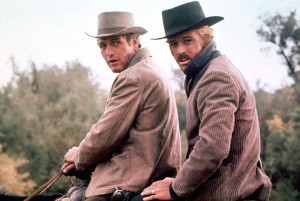Waiting for the Weekend: Is the NBA Using Monopoly Money? Comments Off on Waiting for the Weekend: Is the NBA Using Monopoly Money?

Some of the NBA free agent signings makes me think of the guys chasing Butch and Sundance. “Who are those guys?”
As I have read over the last few days about all the NBA players receiving huge guaranteed, long-term contracts, I can’t help thinking about the classic movie Butch Cassidy and the Sundance Kid.
Early in the movie when Butch and Sundance are being followed by a group of horsemen, they keep asking themselves “who are those guys?” as they are unable to shake them despite making many maneuvers that typically would have knocked trackers off their trail.
With several of the players who have signed mammoth contracts this week, I have that same question “who are those guys?”
Obviously, a few of the players receiving eye-popping contracts are household names, like Steph Curry, Kevin Durant and Kyle Lowry, but it seems that many of the large contracts have gone to players who even regular NBA fans barely know.
Tell me the truth, could you really pick Otto Porter Jr. (4 years, $106.5 million offer sheet by the Nets), Danilo Gallinari (3 years, $65 million by the Clippers) or Langston Galloway (3 years, $21 million by the Pistons) out of a lineup? Not to mention, Tim Hardaway Jr. signed a four year, $71.5 million offer sheet with the Knicks. Now, in his day I could see Tim Hardaway Sr. being worth that type of money, but the young Hardaway has a career scoring average of 11 points per game, including a career-high 14.5 ppg this past season. I barely even knew he was still in the NBA.
I remember in the early 1980s when new NBA Commissioner David Stern pledged that the NBA was on their way to an average salary of a million dollars (at a time when a million dollars was a lot of money). Granted that he made that claim early in the era of Bird and Magic, but still, it seemed a bit far-fetched given that the NBA was clearly number three in terms of the professional sports pecking order in the United States.
Now 35 years later, you can argue that in some ways the NBA is still third among a broad group of sports fans in the U.S., but it probably has the most loyal core of young fans (age 10-30) of any of the three professional major sports leagues and is definitely giving its rank-and-file players larger contracts than that level of player can find in the NFL or MLB. Read the rest of this entry →